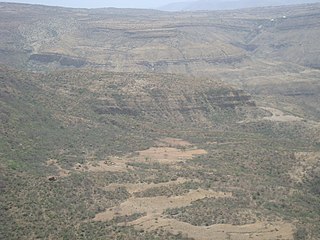 W
WAddi Lihtsi is an exclosure located in the Dogu'a Tembien woreda of the Tigray Region in Ethiopia. The area is protected by the local community.
 W
WAddi Meles is an exclosure located in the Dogu'a Tembien woreda of the Tigray Region in Ethiopia. The area is protected by the local community.
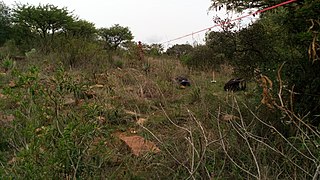 W
WAddilal is an exclosure located in the Dogu'a Tembien woreda of the Tigray Region in Ethiopia. The area has been protected since 1992 by the local community.
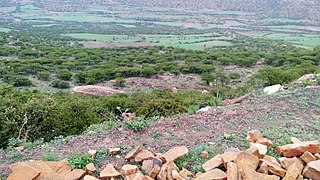 W
WAfedena is an exclosure located in the Dogu'a Tembien woreda of the Tigray Region in Ethiopia. The area has been protected since 2008 by the local community.
 W
WBirdwatching, or birding, is a form of wildlife observation in which the observation of birds is a recreational activity or citizen science. It can be done with the naked eye, through a visual enhancement device like binoculars and telescopes, by listening for bird sounds, or by watching public webcams.
 W
WCh’elaqo is an exclosure located in the Dogu'a Tembien woreda of the Tigray Region in Ethiopia.
 W
WGemgema is an exclosure located in the Dogu'a Tembien woreda of the Tigray Region in Ethiopia. The area has been protected since 1992 by the local community.
 W
WHarehuwa is an exclosure located in the Dogu'a Tembien woreda of the Tigray Region in Ethiopia. The area has been protected since 1999 by the local community.
 W
WKhunale is an exclosure located in the Dogu'a Tembien woreda of the Tigray Region in Ethiopia. The area has been protected since 1990 by the local community.
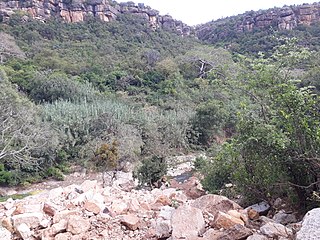 W
WKidmi Gestet is an exclosure located in the Dogu'a Tembien woreda of the Tigray Region in Ethiopia.
 W
WLafa is an exclosure located in the Dogu'a Tembien woreda of the Tigray Region in Ethiopia. The area has been protected since 1988 by the local community.
 W
WMay Be’ati is an exclosure located in the Dogu'a Tembien woreda of the Tigray Region in Ethiopia. The area has been protected since 1968 by the local community.
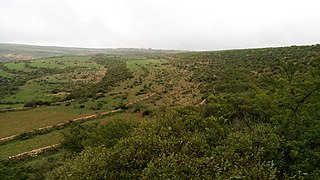 W
WMay Genet is an exclosure located in the Dogu'a Tembien woreda of the Tigray Region in Ethiopia. The area has been protected since 2010 by the local community.
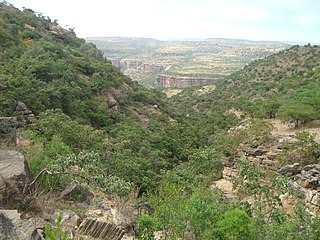 W
WMay Hib’o is an exclosure located in the Dogu'a Tembien woreda of the Tigray Region in Ethiopia. The exclosure holds a 70-metre long cave.
 W
WMi'am Atali is an exclosure located in the Dogu'a Tembien woreda of the Tigray Region in Ethiopia. The area has been protected since 2010 by the local community.
 W
WSesemat is an exclosure located in the Dogu'a Tembien woreda of the Tigray Region in Ethiopia. The area has been protected since 1993 by the local community.
 W
WTogogwa is an exclosure located in the Dogu'a Tembien woreda of the Tigray Region in Ethiopia. The area has been protected since 1988 by the local community.
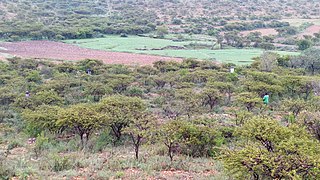 W
WTukhul is an exclosure located in between the villages of Tukhul and Miheni in the Dogu'a Tembien woreda of the Tigray Region in Ethiopia. The area has been protected since 1998 by the local community.
 W
WZiban Dake is an exclosure located in the Dogu'a Tembien woreda of the Tigray Region in Ethiopia.
 W
WAfocal photography, also called afocal imaging or afocal projection is a method of photography where the camera with its lens attached is mounted over the eyepiece of another image forming system such as an optical telescope or optical microscope, with the camera lens taking the place of the human eye.
 W
WThe Big Twitch is a 2005 non-fiction book by Australian writer Sean Dooley. It covers his 2002 attempt to break the record and see more than 700 birds in Australia in one year.
 W
WThe Big Year is a 2011 American comedy film starring Jack Black, Owen Wilson and Steve Martin. The Big Year was directed by David Frankel and written by Howard Franklin. It was based on the 2004 nonfiction book The Big Year: A Tale of Man, Nature and Fowl Obsession by Mark Obmascik. The book followed three men on a quest for a Big Year - a competition among birders to see who can see and identify the greatest number of species of birds in North America in a calendar year. The actual men were Sandy Komito, Al Levantin, and Greg Miller, who were chasing Komito's prior record. The film uses the same premise with fictional characters.
 W
WA bird bath is an artificial puddle or small shallow pond, created with a water-filled basin, in which birds may drink, bathe, and cool themselves. A bird bath can be a garden ornament, small reflecting pool, outdoor sculpture, and also can be a part of creating a vital wildlife garden.
 W
WA birdfeeder, bird feeder, bird table, or tray feeder are devices placed outdoors to supply bird food to birds. The success of a bird feeder in attracting birds depends upon its placement and the kinds of foods offered, as different species have different preferences.
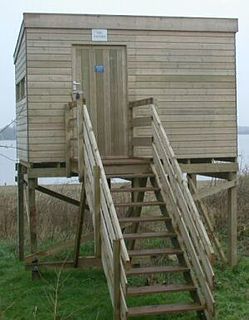 W
WA bird hide is a shelter, often camouflaged, that is used to observe wildlife, especially birds, at close quarters. Although hides or hunting blinds were once built chiefly as hunting aids, they are now commonly found in parks and wetlands for the use of birdwatchers, ornithologists and other observers who do not want to disturb wildlife as it is being observed.
 W
WBird Names for Birds (BNFB) is a campaign to change the common names of American birds that were named after people. Officially launched in June 2020 with a public petition, the BNFB movement emerged after several years of social activism by multiple American ornithologists and birders, many of whom are not affliated with BNFB but remain devoted to the cause. BNFB was formally launched with a public petition dated June 22, 2020, co-signed by 182 individuals, which urged the American Ornithological Society (AOS) to "to acknowledge the issue of eponymous and honorific common names, to outline a plan to change harmful common names, and to prioritize the implementation of this plan."
 W
WBird Neighbors, published in 1897, was the first major work by nature writer Neltje Blanchan. The book combined scientific data with color illustrations, accessible language, and personal experience reflecting Blanchan's joy in nature. In his introduction, naturalist John Burroughs praised it as "reliable" as well as "written in a vivacious strain by a real bird lover."
 W
WBird tracking provides a way to assess the habitat range and behavior of birds without ever seeing the bird. Bird tracking falls under the category of tracking and is related to animal tracking. A guide to bird tracking has been published. Bird tracking is a tool used by naturalists to assess what birds are present in an ecosystem even if the bird is rarely seen.
 W
WHousing more than 200 resident and wintering bird species, Chennai has long been a haven for bird watchers. It is the one of the few urban areas in India with diverse range of birds including greater flamingo, black baza, osprey, Indian eagle-owl, Coppersmith barbet, Spot billed pelican and pied avocet can be seen. The following are some known birding hotspots in and around Chennai.
 W
WThe Birds of Vermont Museum (BOVM) is a non-profit institution established in 1987 in Huntington, Vermont, United States. It was created to preserve and exhibit a collection of lifelike bird carvings for the purpose of educating people about the role of birds in the ecosystem. Today, the museum is surrounded by a 100-acre (0.40 km2) bird sanctuary and displays more than 495 biologically accurate woodcarvings created by Bob Spear, a Vermont naturalist and master woodcarver.
 W
WBlack Birders Week is a week-long series of online events to highlight Black nature enthusiasts and to increase the visibility of Black birders, who face unique challenges and dangers when engaging in outdoor activities. The event was created as a response to the Central Park birdwatching incident and police brutality against Black Americans. The inaugural event ran from May 31 to June 5, 2020. The week of events was organized by a group of STEM professionals and students known as the BlackAFinSTEM collective.
 W
WThe Central Park birdwatching incident was a confrontation on May 25, 2020, between Amy Cooper, a white woman walking her dog, and Christian Cooper, a black birdwatcher, in a section of New York City's Central Park known as the Ramble. Amy Cooper's dog was unleashed in the Ramble, an area where leashing is required; she allegedly refused Christian Cooper's request that her dog be leashed. When Christian beckoned the dog toward him with a dog treat, Amy yelled "Don't you touch my dog!" Christian started recording Amy, who placed a call to 9-1-1; by the time New York City Police Department officers responded, both parties had left.
 W
WJames Currie is a birding expert, conservation advocate, and host of Nikon’s Birding Adventures TV and Nat Geo Wild’s Aerial Assassins.
 W
WDigiscoping is a neologism for afocal photography, using a (digital) camera to record distant images through the eyepiece of an optical telescope.
 W
WThe Druridge Bay curlew was a curlew that was present in Druridge Bay, Northumberland in May 1998, whose species identification proved to be controversial. The bird was identified by its finder, and most others who saw it, as a first-summer slender-billed curlew, one of the rarest birds in the world; however, this identification provoked scepticism from experts. The bird was initially accepted as this species by the British Birds Rarities Committee and the British Ornithologists’ Union Records Committee - however, this identification was eventually rejected in 2013
 W
WPete Dunne is an American author, famous for his writings on natural history and birding. He is also the founder of the World Series of Birding, as well as the former director of the Cape May Bird Observatory, Birding Ambassador for the New Jersey Audubon Society, and former publisher of New Jersey Audubon magazine. His articles have appeared in most major American birding publications, including Birder's World, Birding, Bird Watcher's Digest, and WildBird, as well as in The New York Times. In 2001, he received the Roger Tory Peterson Award from the American Birding Association for lifetime achievement in promoting the cause of birding.
 W
WeBird is an online database of bird observations providing scientists, researchers and amateur naturalists with real-time data about bird distribution and abundance. Originally restricted to sightings from the Western Hemisphere, the project expanded to include New Zealand in 2008, and again expanded to cover the whole world in June 2010. eBird has been described as an ambitious example of enlisting amateurs to gather data on biodiversity for use in science.
 W
WThe flight zone of an animal is the area surrounding an animal that if encroached upon by a potential predator or threat, including humans, will cause alarm and escape behavior. The flight zone is determined by the animal's flight distance, sometimes called flight initiation distance (FID) which extends horizontally from the animal and sometimes vertically. It may also be termed escape distance, alert distance, flush distance, and escape flight distance.
 W
WFraser's Hill is a hill resort located on the Titiwangsa Ridge in Raub District, Pahang, Malaysia. It is about 100 km (62 mi) from Kuala Lumpur. In 1890, Louis James Fraser established the area as a tin mining community known as Pamah Lebar when he discovered rich tin deposits and opened a tin mining facility. Mining activity there was short lived as the tin ore was depleted in 1913. This led many miners and farmers to abandon the area. Fraser reportedly disappeared in 1910, but research in 2019 concluded that he retired from his position and returned to Great Britain in 1910. He died in 1916 while travelling in Austria-Hungary.
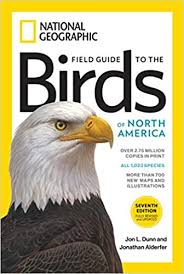 W
WNational Geographic Field Guide to Birds of North America is a reference book and field guide to birds of the United States and Canada. The first edition was published 1983 by the National Geographic Society. There have subsequently been six additional editions. The book contains information on the identification, geographic distribution, habitat preference, and vocalizations. Each species account is presented on the left, while respective illustrations are adjacently on the right page.
 W
WA nest box, also spelled nestbox, is a man-made enclosure provided for animals to nest in. Nest boxes are most frequently utilized for birds, in which case they are also called birdhouses or a birdbox/bird box, but some mammalian species such as bats may also use them. Placing nestboxes or roosting boxes may also be used to help maintain populations of particular species in an area. The modern nest box was invented by the British conservationist Charles Waterton in the early 19th century to encourage more birdlife and wildfowl on the nature reserve he set up on his estate.
 W
WSeawatching is a type of birdwatching where participants observe seabirds from a fixed point on the mainland. They may do this from a coastal location, usually a headland, looking out to sea, or from a boat or ship.
 W
WTo See Every Bird on Earth: A Father, a Son, and a Lifetime Obsession is a book by Dan Koeppel first published in 2005. It is about the author's relationship with his father Richard Koeppel, an obsessive "Big Lister" birdwatcher who had spotted over 7000 different species of birds at the time the book was written. The book focuses on Dan Koeppel's attempts to understand the obsession that ruled his father's life. It also examines the culture on highly competitive birders who travel the world making lists of their sightings, and discusses the history and rules of listing. Richard Koeppel was diagnosed with cancer in 2000, which curtailed his birding and forced him to switch to butterflies found locally near his home on Long Island, New York. He died of cancer-related causes on August 2, 2012.
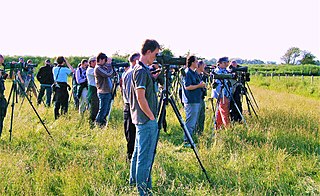 W
WTwitchers' vocabulary is the set of jargon words used by twitchers. Some terms may be specific to regional birding communities, and not all are used due to dialectic and cultural differences.
 W
WWildlife observation is the practice of noting the occurrence or abundance of animal species at a specific location and time, either for research purposes or recreation. Common examples of this type of activity are bird watching and whale watching.
 W
WWisconsin Point is a peninsula off the shore of Superior in Douglas County, Wisconsin, United States. 3 miles (4.8 km) in length, it is in the Lake Superior National Estuarine Research Reserve. The point is the world's largest freshwater bay mouth sand bar. The Wisconsin Point Lighthouse, built in 1913, is situated on the end of the peninsula. Wisconsin Point is owned and maintained by the city of Superior. Other features of Wisconsin Point include a Native American burial ground, extensive beaches and vistas of the city of Duluth, Minnesota, and a diverse forest and lagoon ecosystem. It is a well-known spot for birding during spring and fall migrations and ducks, shorebirds, gulls, hawks, and songbirds, such as warblers, finches, and sparrows, can be seen.